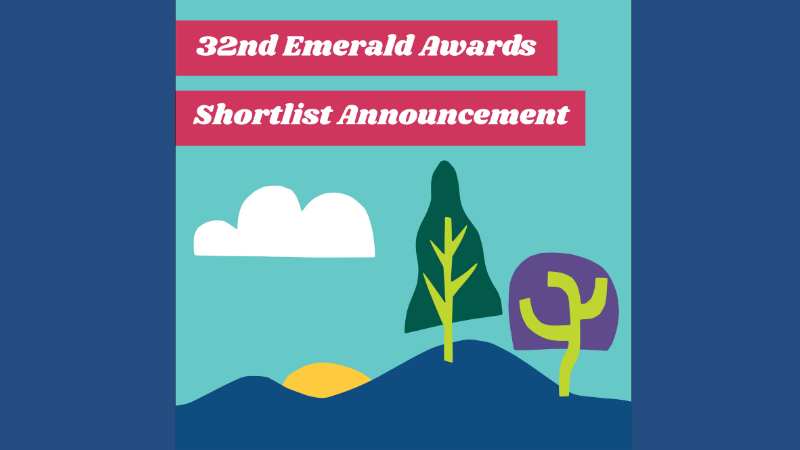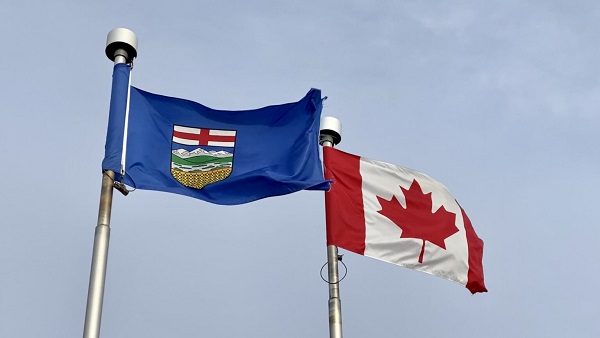Alberta
Alberta’s environmental leaders recognized

The Alberta Emerald Foundation (AEF) announced the shortlist for the 32nd Annual Emerald Awards this week. Since 1992, the Emerald Awards have showcased over 350 recipients and 850 finalists who are raising the bar in addressing environmental and climate change issues. These environmental awards celebrate excellence across all sectors, making them unique not only in Alberta but also in Canada.
This year’s shortlist was chosen by a third-party panel of volunteer judges, each bringing expertise from numerous sectors across Alberta. Judges selected the shortlist, consisting of 39 organizations, projects, and individuals from across the province, from 51 nominations. During their deliberations, the judges also determined who from the shortlist will take home an Emerald Award in each of the 15 award categories.
“Those represented in this year’s shortlist demonstrate the incredible dedication that Albertans have toward protecting our environment and taking action against climate change” says The AEF’s Executive Director, Marisa Orfei, “The diversity in the shortlist is also astounding, there’s small grassroots organizations, large corporations, and everything in between. We’re also incredibly proud to have 17 communities across Alberta represented in this year’s shortlist, including Drayton Valley, Grande Cache, Canmore, and many more.”
Here are the organizations, projects, and individuals recognized in The 32nd Annual Emerald Award shortlist:
Air Category – Recognizing projects and initiatives that improve air quality.
- Blindman Brewing First-in-Canada CO2 Capture and Utilization (Lacombe, AB)
Business Category – Showcasing an organization engaged in commercial, industrial or professional activities that have demonstrated a meaningful commitment to an environmentally sustainable future.
- Reimagine Architects – 26 Years Building Sustainable Futures (Edmonton, AB)
- Eco-Flex Recycled Rubber Solutions (Legal, AB)
- Envirotech Geothermal – Alberta’s smartest way to Net Zero! (Sherwood Park, AB)
Community Group or Nonprofit Category – Recognizing associations dedicated to furthering a particular social cause or advocating for a shared point of view that has demonstrated a significant commitment to the environment through their actions.
- Alberta Bike Swap – supporting the circular economy before it was cool (Calgary, AB)
- Project Forest: Rewilding Canada, One Forest at a time (Edmonton, AB)
- Alberta businesses are building a better Business-as-usual with Green Economy Canada (Edmonton, AB & Calgary, AB)
Education Category – Acknowledging those that have raised the bar by showing leadership and creativity in educating students of all ages about environmental matters.
- Eagle Point-Blue Rapids Parks Council Environmental & Outdoor Education Program (Drayton Valley, AB)
- Future Energy Systems: Exploring Our Energy Future With The Community, Our Students, And More (Edmonton, AB)
- Evergreen Theatre: A 32-Year Legacy of Inspiring Environmental Awareness & Action Through the Arts (Calgary, AB)
Energy Category – Recognizing projects and initiatives that positively support the evolution of our province’s energy systems.
- Calgary’s Residential Solar Calculator (Calgary, AB)
- Bow Valley Green Energy Cooperative, empowering community to transform Alberta’s energy (Canmore, AB)
- Metis Nation of Alberta Climate Change Action Plan (Edmonton, AB)
Government Category – Recognizing all levels of government whose ongoing commitment sets the example of environmental leadership and advocates sustainability as a major consideration in governance.
- Environmental Achievements of the City of St. Albert (St. Albert, AB)
- Violet Grove’s Constructed Floating Wetlands System with Aeration (Drayton Valley, AB)
- Nose Creek Watershed Partnership – Celebrating 25-Years of Watershed Planning, Policy and Action (Mossleigh, AB)
Infrastructure Category – Recognizing environmental advancements in the ways we design, build, and travel.
- Solar Aquatic Systems Wastewater Treatment (Drayton Valley, AB)
- SSRIA: Transforming the AEC Industry Towards a Net Zero Built Environment (Edmonton, AB)
- Ecoplast Solutions: Building Houses from Recycled Plastic Bottles (Lloydminster, AB)
Land Category – Recognizing projects and initiatives that demonstrate excellence in sustainable land use.
- The City of Calgary’s Willow Plantation for Marginal Land Improvement and Carbon Capture (Calgary, AB)
- Ledcor Highway Maintenance Yard Upgrades (Edmonton, AB)
Lifetime Achievement Award – Celebrating environmental leaders who, throughout their lifetime, have made contributions of outstanding environmental significance.
- Dirk and Nanja of The Barrelman Inc.: 25 years of protecting land and water through local action that inspires (Calgary, AB)
Public Engagement & Outreach Category – Recognizing programs and initiatives that educate and empower the broader public by teaching the necessary skills to make informed environmental decisions and take responsible action.
- GreenLearning’s Eco 360 program: Transitioning to a circular economy for plastic waste! (Drayton Valley, AB)
- My Green Closet: Sustainable Lifestyle and Slow Fashion Platform (Edmonton, AB)
- Calgary Climate Symposium: How The City of Calgary Engages and Educates Albertans on Climate Change (Calgary, AB)
Shared Footprints Award – Recognizing those who have exemplified land and water stewardship, built shared knowledge, improved air quality, reduced land disturbances, and encouraged ecotourism.
- Edmonton River Valley Conservation Coalition: Working Together to Protect the North Saskatchewan River Valley (Edmonton, AB)
- Highfield Regenerative Farm (Calgary, AB) Waste Management Category – Recognizing projects and initiatives that innovate the repurposing, reduction, and disposal of waste in an environmentally-conscious way. Earth Warrior (Edmonton, AB)
- Revolutionizing Recycling with [Re] Waste: Transforming Waste Management for a Sustainable Future (Edmonton, AB)
- Microgreens Club – A Zero Waste Initiative (Calgary, AB)
Water Category – Recognizing projects and initiatives that demonstrate excellence through the monitoring, management and/or stewardship of water and watersheds.
- Forest industry collaboration cultivates sustainability around vital wetland ecosystems (Edmonton, AB)
- LakeKeepers: Community-Based Monitoring of Alberta’s Lakes (Edmonton, AB)
- Safe water and water sustainability in Alberta (Calgary, AB)
Wildlife & Biodiversity Category – Recognizing projects and initiatives that protect and conserve natural habitats and wild species.
- Aseniwuche Winewak Nation’s Caribou Patrol Program: 11 years of saving Alberta’s caribou (Grande Cache, AB)
- Friends of Fish Creek Provincial Park Society – Sikome Beaver Coexistence Project. (Calgary, AB)
- The Edmonton Urban Coyote Project: Collaborative Research and Education for Coexistence with Wildlife (Edmonton, AB)
Youth Category – Recognizing people, 25 years of age and under, who have made meaningful contributions and have taken positive action to improve the environmental health of their community.
- Monica Figueroa: Edmonton youth climate activist (Edmonton, AB)
- Strathmore High School Community Greenhouse (Strathmore, AB)
- Energy & Environmental Sustainability Projects in Action at New Myrnam School (Myrnam, AB)
The recipients in each category will be named at the 32nd Annual Emerald Awards ceremony on June 7, 2023, at the Citadel Theatre in Edmonton, Alberta. Emerald Award Recipients receive:
- A $2,000 grant to support their work or to donate to an environmental charity of their choice
- A profile of their work through The AEF’s Sharing Stories program, which includes the Emerald Documentary Series, What On EARTH Can We Do? podcast, and Emerald Speakers Series
- A certificate and Emerald Awards recipient digital logo to commemorate their achievement
The Awards will also be live-streamed through the AEF”s YouTube Chanel to allow people from across the province to attend. Tickets for the 32nd Annual Emerald Awards ceremony can be purchased here.
The Alberta Emerald Foundation (AEF) is a registered Canadian charity with the unique mission to tell Alberta’s environmental good news stories to uplift, educate, and inspire our province toward meeting environmental and climate change goals.
Research suggests that when we learn about what real environmental and climate change solutions look like and how they’re being implemented in our communities, it increases our ability and desire to take action in our own lives. By providing real-life examples of these solutions through our various storytelling programs, the AEF helps Albertans take the next step toward environmental protection and climate action. With every person that we reach through our programming, we’re helping Alberta reach its broader environmental and climate change goals.
Click to learn more about the Alberta Emerald Foundation.
Alberta
Alberta judge sides with LGBT activists, allows ‘gender transitions’ for kids to continue

From LifeSiteNews
‘I think the court was in error,’ Alberta Premier Danielle Smith has said. ‘There will be irreparable harm to children who get sterilized.’
LGBT activists have won an injunction that prevents the Alberta government from restricting “gender transitions” for children.
On June 27, Alberta King’s Court Justice Allison Kuntz granted a temporary injunction against legislation that prohibited minors under the age of 16 from undergoing irreversible sex-change surgeries or taking puberty blockers.
“The evidence shows that singling out health care for gender diverse youth and making it subject to government control will cause irreparable harm to gender diverse youth by reinforcing the discrimination and prejudice that they are already subjected to,” Kuntz claimed in her judgment.
Kuntz further said that the legislation poses serious Charter issues which need to be worked through in court before the legislation could be enforced. Court dates for the arguments have yet to be set.
READ: Support for traditional family values surges in Alberta
Alberta’s new legislation, which was passed in December, amends the Health Act to “prohibit regulated health professionals from performing sex reassignment surgeries on minors.”
The legislation would also ban the “use of puberty blockers and hormone therapies for the treatment of gender dysphoria or gender incongruence” to kids 15 years of age and under “except for those who have already commenced treatment and would allow for minors aged 16 and 17 to choose to commence puberty blockers and hormone therapies for gender reassignment and affirmation purposes with parental, physician and psychologist approval.”
Just days after the legislation was passed, an LGBT activist group called Egale Canada, along with many other LGBT organizations, filed an injunction to block the bill.
In her ruling, Kuntz argued that Alberta’s legislation “will signal that there is something wrong with or suspect about having a gender identity that is different than the sex you were assigned at birth.”
She further claimed that preventing minors from making life-altering decisions could inflict emotional damage.
However, the province of Alberta argued that these damages are speculative and the process of gender-transitioning children is not supported by scientific evidence.
“I think the court was in error,” Alberta Premier Danielle Smith said on her Saturday radio show. “That’s part of the reason why we’re taking it to court. The court had said there will be irreparable harm if the law goes ahead. I feel the reverse. I feel there will be irreparable harm to children who get sterilized at the age of 10 years old – and so we want those kids to have their day in court.”
READ: Canadian doctors claim ‘Charter right’ to mutilate gender-confused children in Alberta
Overwhelming evidence shows that persons who undergo so-called “gender transitioning” procedures are more likely to commit suicide than those who are not given such irreversible surgeries. In addition to catering to a false reality that one’s sex can be changed, trans surgeries and drugs have been linked to permanent physical and psychological damage, including cardiovascular diseases, loss of bone density, cancer, strokes and blood clots, and infertility.
Meanwhile, a recent study on the side effects of “sex change” surgeries discovered that 81 percent of those who have undergone them in the past five years reported experiencing pain simply from normal movements in the weeks and months that followed, among many other negative side effects.
Alberta
Why the West’s separatists could be just as big a threat as Quebec’s

By Mark Milke
It is a mistake to dismiss the movement as too small
In light of the poor showing by separatist candidates in recent Alberta byelections, pundits and politicians will be tempted to again dismiss threats of western separatism as over-hyped, and too tiny to be taken seriously, just as they did before and after the April 28 federal election.
Much of the initial skepticism came after former Leader of the Opposition Preston Manning authored a column arguing that some in central Canada never see western populism coming. He cited separatist sympathies as the newest example.
In response, (non-central Canadian!) Jamie Sarkonak argued that, based upon Alberta’s landlocked reality and poll numbers (37 per cent Alberta support for the “idea” of separation with 25 per cent when asked if a referendum were held “today”), western separation was a “fantasy” that “shouldn’t be taken seriously.” The Globe and Mail’s Andrew Coyne, noting similar polling, opined that “Mr. Manning does not offer much evidence for his thesis that ‘support for Western secession is growing.’”
Prime Minister Mark Carney labelled Manning’s column “dramatic.” Toronto Star columnist David Olive was condescending. Alberta is “giving me a headache,” he wrote. He argued the federal government’s financing of “a $34.2-billion expansion of the Trans Mountain pipeline (TMX)” as a reason Albertans should be grateful. If not, wrote Olive, perhaps it was time for Albertans to “wave goodbye” to Canada.
As a non-separatist, born-and-bred British Columbian, who has also spent a considerable part of his life in Alberta, I can offer this advice: Downplaying western frustrations — and the poll numbers — is a mistake.
One reason is because support for western separation in at least two provinces, Alberta and Saskatchewan, is nearing where separatist sentiment was in Quebec in the 1970s.
In our new study comparing recent poll numbers from four firms (Angus Reid Institute, Innovative Research Group, Leger, and Mainstreet Research), the range of support in recent months for separation from Canada in some fashion is as follows, from low to high: Manitoba (6 per cent to 12 per cent); B.C. (nine per cent to 20 per cent); Saskatchewan (20 per cent to 33 per cent) and Alberta (18 per cent to 36.5 per cent). Quebec support for separation was in a narrow band between 27 per cent and 30 per cent.
What such polling shows is that, at least at the high end, support for separating from Canada is now higher in Saskatchewan and Alberta than in Quebec.
Another, even more revealing comparison is how western separatist sentiment now is nearing actual Quebec votes for separatism or separatist parties back five decades ago. The separatist Parti Québécois won the 1976 Quebec election with just over 41 per cent of the vote. In the 1980 Quebec referendum on separation, “only” 40 per cent voted for sovereignty association with Canada (a form of separation, loosely defined). Those percentages were eclipsed by 1995, when separation/sovereignty association side came much closer to winning with 49.4 per cent of the vote.
Given that current western support for separation clocks in at as much as 33 per cent in Saskatchewan and 36.5 per cent in Alberta, it begs this question: What if the high-end polling numbers for western separatism are a floor and not a ceiling for potential separatist sentiment?
One reason why western support for separation may yet spike is because of the Quebec separatist dynamic itself and its impact on attitudes in other parts of Canada. It is instructive to recall in 1992 that British Columbians opposed a package of constitutional amendments, the Charlottetown Accord, in a referendum, in greater proportion (68.3 per cent) than did Albertans (60.2 per cent) or Quebecers (56.7 per cent).
Much of B.C.’s opposition (much like in other provinces) was driven by proposals for special status for Quebec. It’s exactly why I voted against that accord.
Today, with Prime Minister Carney promising a virtual veto to any province over pipelines — and with Quebec politicians already saying “non” — separatist support on the Prairies may become further inflamed. And I can almost guarantee that any whiff of new favours for Quebec will likely drive anti-Ottawa and perhaps pro-separatist sentiment in British Columbia.
There is one other difference between historic Quebec separatist sentiment and what exists now in a province like Alberta: Alberta is wealthy and a “have” province while Quebec is relatively poor and a have-not. Some Albertans will be tempted to vote for separation because they feel the province could leave and be even more prosperous; Quebec separatist voters have to ask who would pay their bills.
This dynamic again became obvious, pre-election, when I talked with one Alberta CEO who said that five years ago, separatist talk was all fringe. In contrast, he recounted how at a recent dinner with 20 CEOs, 18 were now willing to vote for separation. They were more than frustrated with how the federal government had been chasing away energy investment and killing projects since 2015, and had long memories that dated back to the National Energy Program.
(For the record, they view the federal purchase of TMX as a defensive move in response to its original owner, Kinder Morgan, who was about to kill the project because of federal and B.C. opposition. They also remember all the other pipelines opposed/killed by the Justin Trudeau government.)
Should Canadians outside the West dismiss western separatist sentiment? You could do that. But it’s akin to the famous Clint Eastwood question: Do you feel lucky?
Mark Milke is president and founder of the Aristotle Foundation for Public Policy and co-author, along with Ven Venkatachalam, of Separatist Sentiment: Polling comparisons in the West and Quebec.
-

 COVID-198 hours ago
COVID-198 hours agoOntario man launches new challenge against province’s latest attempt to ban free expression on roadside billboards
-

 Energy16 hours ago
Energy16 hours agoThis Canada Day, Celebrate Energy Renewal
-

 Business1 day ago
Business1 day agoWhile China Hacks Canada, B.C. Sends Them a Billion-Dollar Ship Building Contract
-

 Alberta1 day ago
Alberta1 day agoSo Alberta, what’s next?
-

 Alberta7 hours ago
Alberta7 hours agoAlberta Next Takes A Look At Alberta Provincial Police Force
-

 Bjorn Lomborg1 day ago
Bjorn Lomborg1 day agoThe Physics Behind The Spanish Blackout
-

 Alberta9 hours ago
Alberta9 hours agoCanadian Oil Sands Production Expected to Reach All-time Highs this Year Despite Lower Oil Prices
-

 International10 hours ago
International10 hours agoPresident Xi Skips Key Summit, Adding Fuel to Ebbing Power Theories






